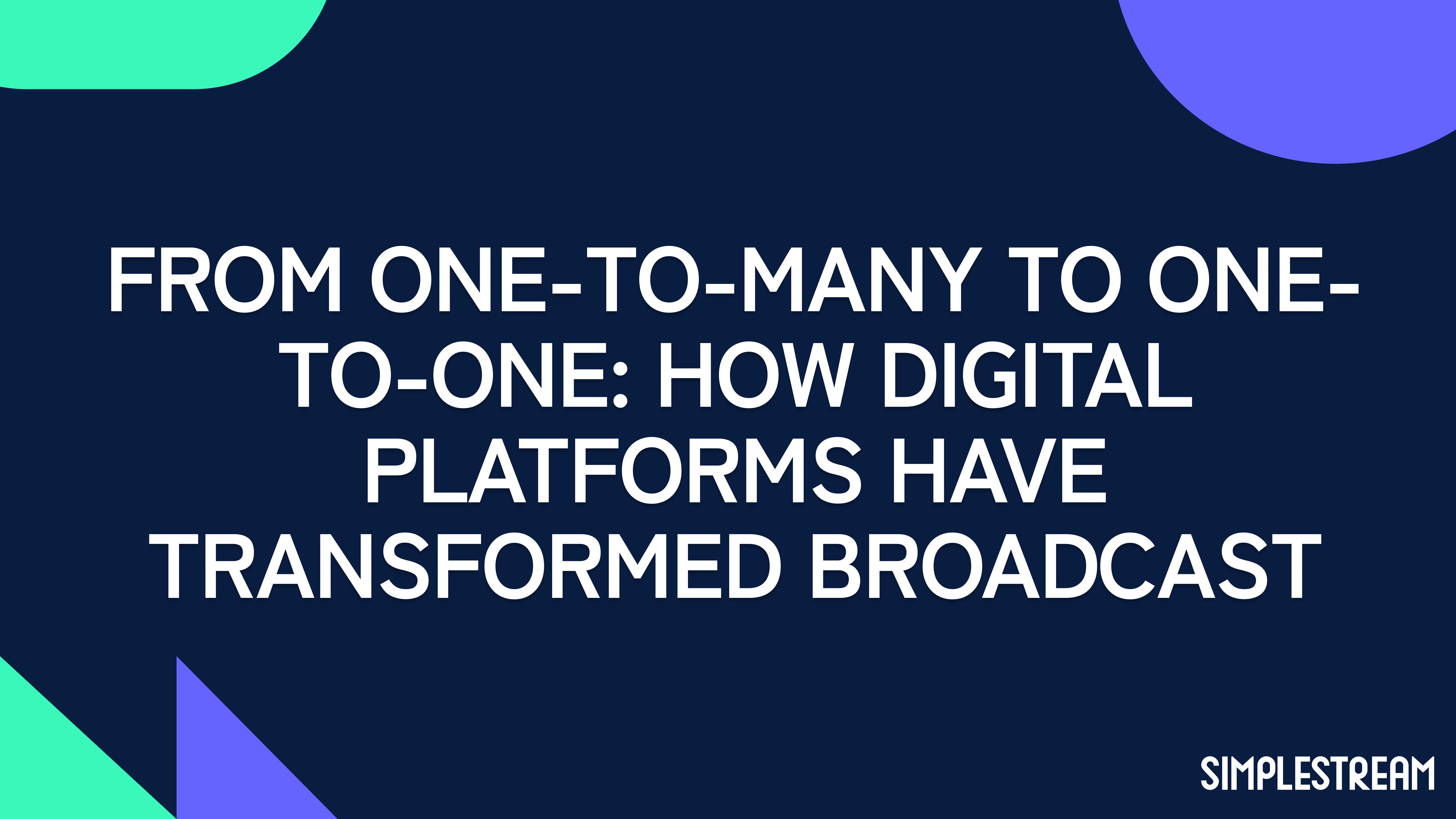Five takeaways from London’s SportsPro OTT Summit
The Tottenham Hotspur Stadium hosted the 2021 edition of SportsPro OTT Summit. Here are five key takeaways.
The third quarter of 2021 brought back in-person events after a very long hiatus imposed by the Covid-19 pandemic. The end of a year rich of world-class sporting events and a progressive return to a pre-2020 scenario, marked the occasion for the sports industry to get together in London for the annual SportsPro OTT Summit, a four-day hybrid event, the first half of which staged at the epic Tottenham Hotspur Stadium.
We were there with our commercial & sales team, back to an in-person event after a long while, along with a number of peers in the OTT and streaming space. From digital transformation to fan engagement, from content to the ways technology and innovation keep disrupting the sports industry in a post-pandemic world dominated by evolved habits, we rounded them up in a few key takeaways. Have a look for yourself.
#1. OTT and the broadcast landscape
To D2C or not to D2C? Among the headlines at the summit, this was clearly one of the loudest. Several sports have benefited from the advent of OTT players, and going direct-to-consumer seems to be an obvious consequence for sports properties of various sizes. These services, indeed, are becoming integral to making premium sports more affordable, and to shape the dynamics of the sector and the rights market.
Is that true for the giants too? Think of football’s dream leagues such as Premier League, Bundesliga, La Liga, or Serie A. According to Ampere Analysis' Jacopo Genovese, pure D2C strategies remain unlikely for Tier 0/1 entities, as OTT platforms are not seen as able to replace traditional TV in the short term. To be effective in terms of ROI, according to specific models created, they’d need to outnumber current subscription levels of services that already include those leagues’ rights in their value proposition.
#2. Maximising content
Content is and remains king. However, Covid-19 opened a window on a world that – for a long while – didn’t see any live event taking place. For months, we reluctantly sat down and watched sporting moments unfolding behind closed doors, with no real spectators, with artificial noise added to the broadcast. Needless to say, the challenge brought by a truly unprecedented situation opened up new ways of conceiving content, which changed shape and form, to satisfy audiences with different needs and demands.
Highlights, for instance, carry now a higher value and can drive consumers – together with other non-live content – towards premium products. On another note, athletes themselves are now more than ever under the spotlight. Especially via platforms such as TikTok, they have become the new primary actors, a real ace up the sleeve of media brands to disrupt and revolutionise the way younger generations consume content.
#3. Interactivity is the future of fan engagement
Broadcasters are clearly fighting for loyalty and returning viewers, and are looking to monetise audiences in innovative ways. A deeper, interactive experience must be at the heart of future strategies. Gamification features, as well as on-stream monetisation opportunities, end up increasing the loyalty of fans, binding them to the content consumed. Features like chats, ‘watch parties’, quizzes, polls, and interactive advertising roll-outs are set to become a precious commodity in the world of OTT.
Will the next-gen OTT platform look like a video game, then? The reality might not be that far off. Big data and artificial intelligence (AI) are here to stay and will be used to generate a whole new suite of revenue streams.
#4. Sustainability, a keyword for a better world
The current climate crisis is undoubtedly one of the most urgent topics on the desk of world leaders today. As sports play a key role in setting new trends to try and make life on our planet better, the agenda for the near future needs to be built on the foundation of sustainability. What does this mean, specifically? Not only are sports events and yearly calendars to be reviewed and rationalised, but also technology at the service of the sports business must adapt towards an eco-friendlier approach.
Covid-19 accelerated the shift towards remote production and distribution of content. This can bring practical benefits, not only from a business perspective but also when looking at sustainability as an objective.
#5. NFTs, who dis?
The adoption of blockchain technologies has been spreading rapidly across a number of industries, especially in the last few years. Sport, predictably, isn’t an exception to this, and non-fungible tokens (NFTs), have recently become a largely debated digital asset, potentially capable of driving growth across different disciplines. Although NFTs can play a role in today’s fan engagement initiatives, it is believed that their inclusion in the sports landscape cannot steal the attention from other dominant aspects. In simple words: NFTs need to play a useful part. Do they make sense for fans? Are they generally appealing? The technology behind NFTs is certainly interesting, however, it’s not the time – yet – to say whether it’s something that’s really needed or it’s all just part of a hunt for the next valuable source of revenue.
Closing thoughts
The sports business sector remains an ever-evolving space. SportsPro OTT was a great occasion to be back in the same venue with many operators, partners, clients, and relevant stakeholders who took the pulse of the industry after a long while. The future that awaits is one dominated by technological innovation and deeper use of data to inform business and content strategies — with the end goal to enhance fan engagement, and pave the way to the experiences of tomorrow.


